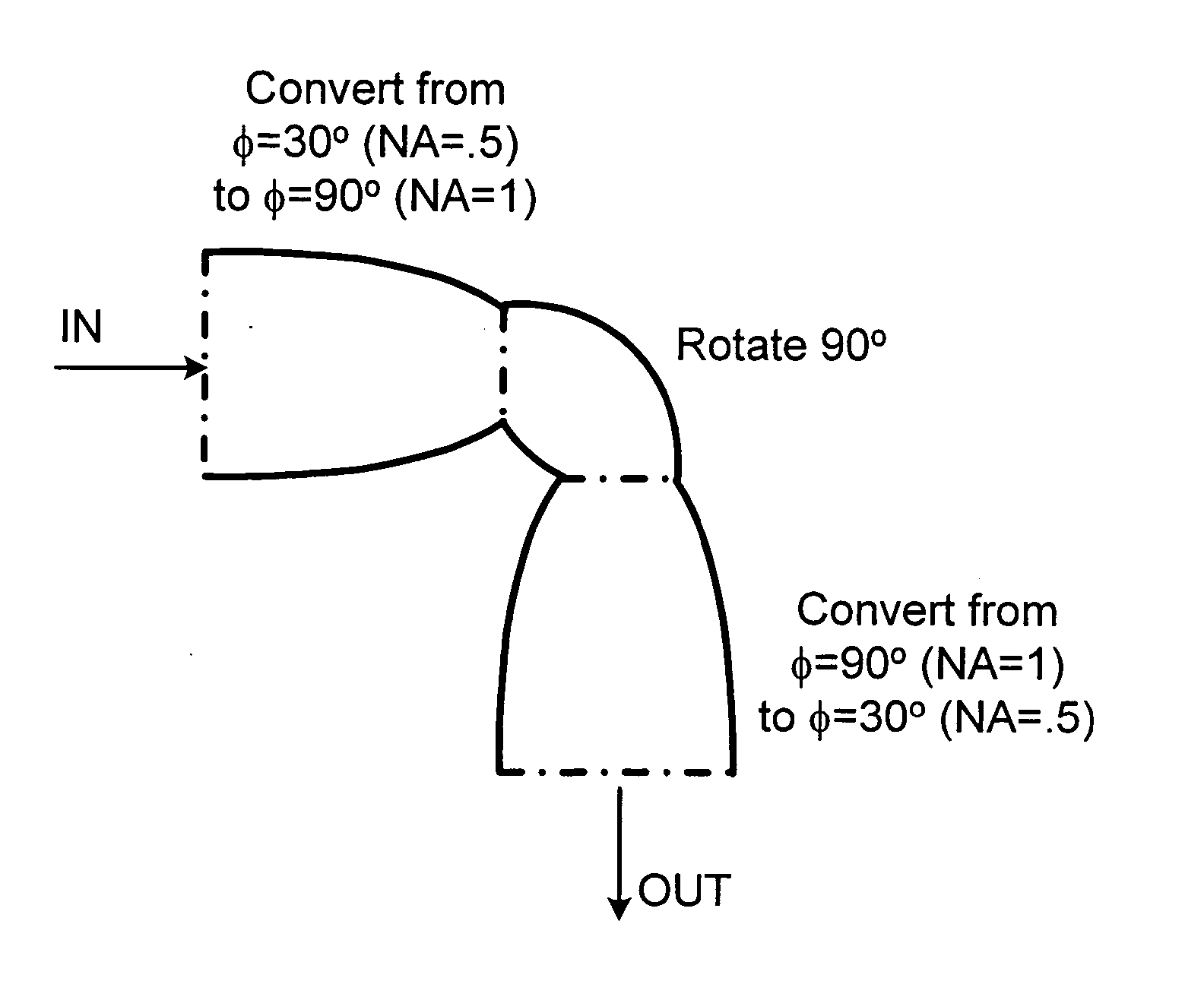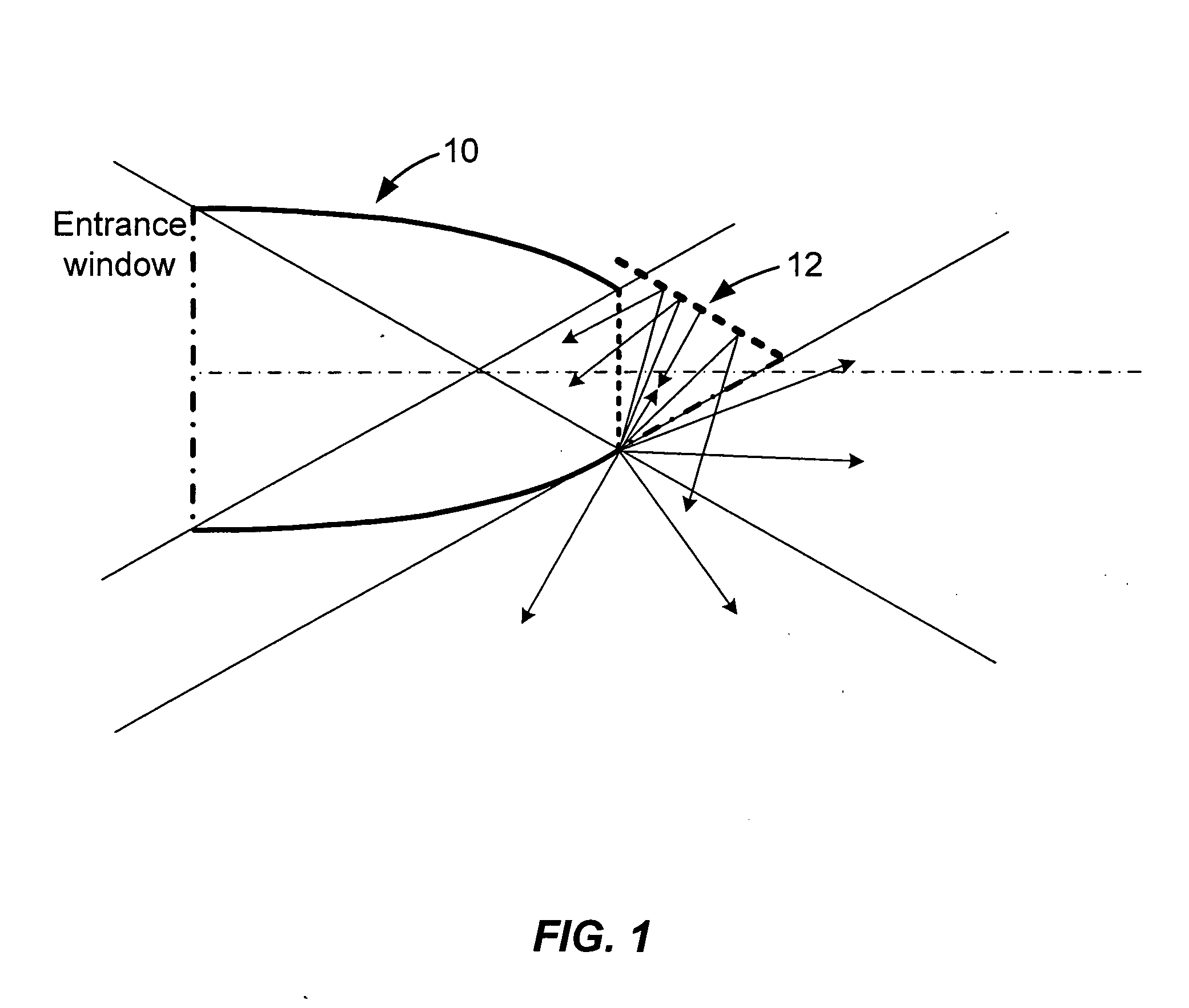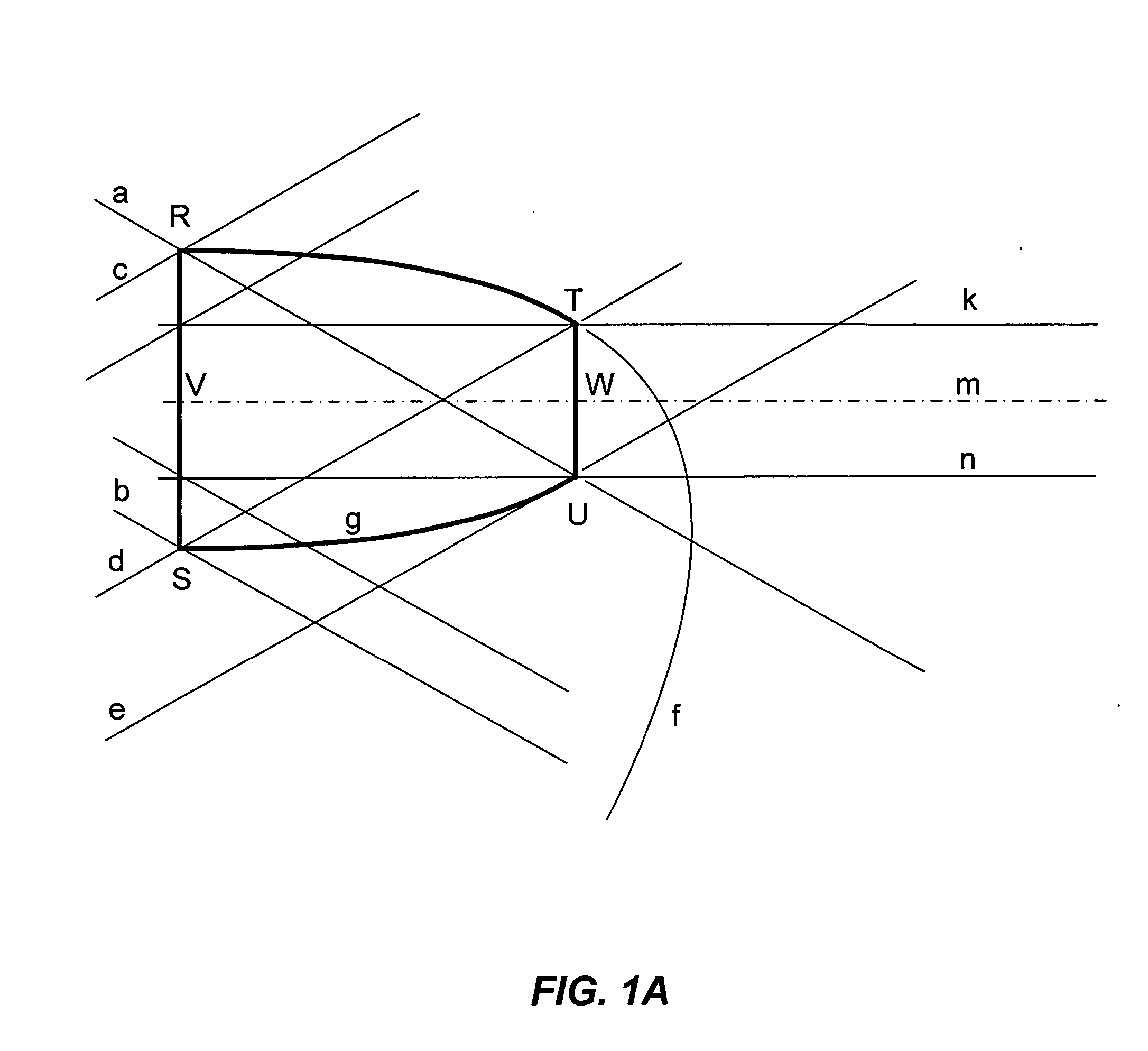Non-imaging optical corner turner
- Summary
- Abstract
- Description
- Claims
- Application Information
AI Technical Summary
Benefits of technology
Problems solved by technology
Method used
Image
Examples
Embodiment Construction
I. Set-up of the Problem:
[0043]FIG. 1 shows an air-filled, two-dimensional, compound parabolic concentrator (2D CPC) 10, designed to accept rays at up to 30 degrees from the system axis (i.e., NA=0.5). As used herein, φ is defined as the maximum angle which a propagating ray may bear to the optical axis of input and output channels, θ is defined as the angle through which the corner turner rotates the optical axis, and the Numerical Aperture (NA) is defined as product of the sin of φ and the refractive index, n, of the medium in which light propagates. The examples presented herein are worked out for a medium with n=1 (i.e. air). For cases in which the medium of propagation has higher refractive index, e.g. for corner turners molded of solid plastic or glass, it is straightforward to calculate the appropriate value of φ if the NA of propagating light is known, as it commonly will be in the design of an optical system. At the exit surface of the CPC of FIG. 1, the rays have been conc...
PUM
 Login to View More
Login to View More Abstract
Description
Claims
Application Information
 Login to View More
Login to View More - R&D
- Intellectual Property
- Life Sciences
- Materials
- Tech Scout
- Unparalleled Data Quality
- Higher Quality Content
- 60% Fewer Hallucinations
Browse by: Latest US Patents, China's latest patents, Technical Efficacy Thesaurus, Application Domain, Technology Topic, Popular Technical Reports.
© 2025 PatSnap. All rights reserved.Legal|Privacy policy|Modern Slavery Act Transparency Statement|Sitemap|About US| Contact US: help@patsnap.com



